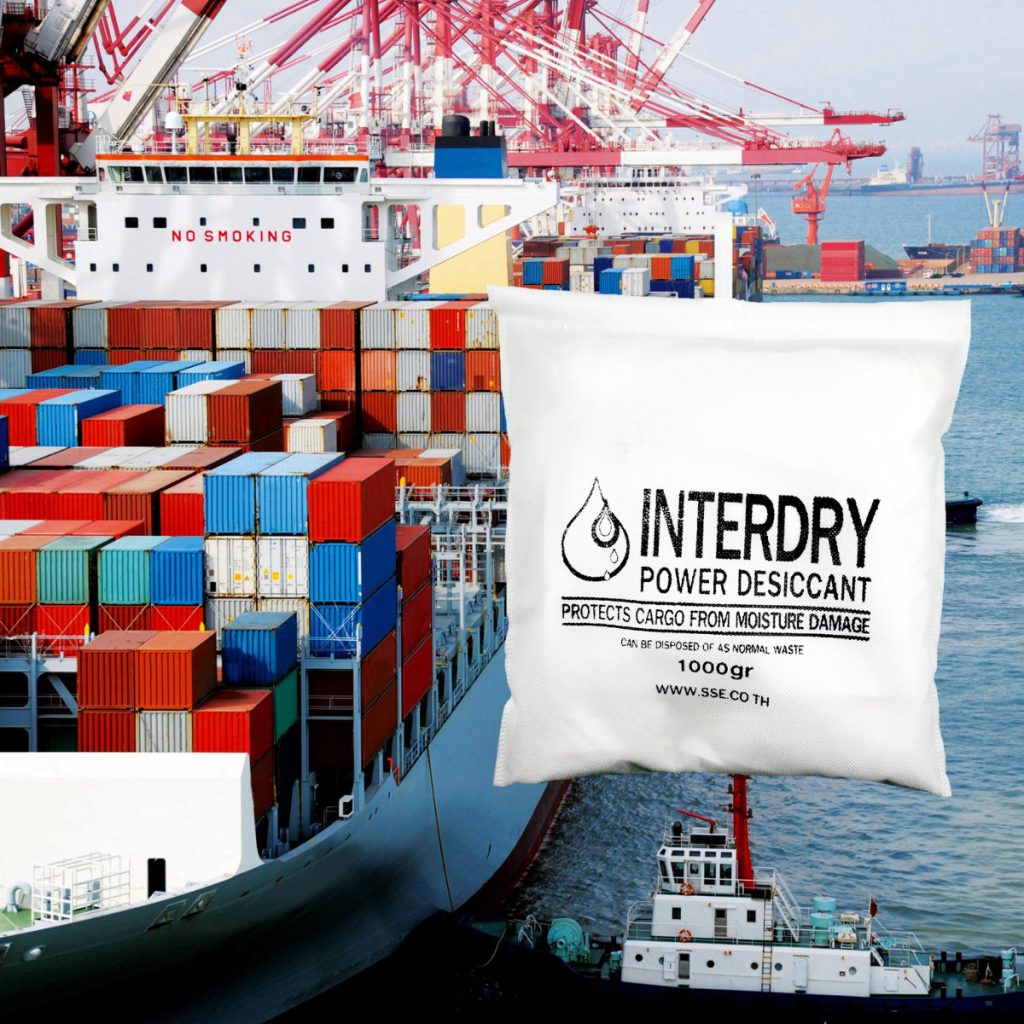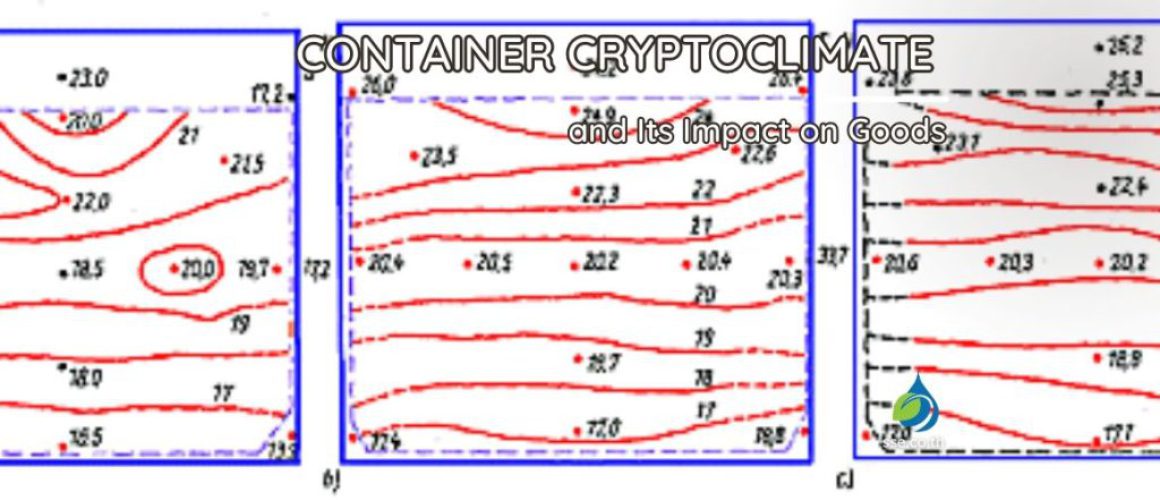Container Cryptoclimate and Its Impact on Goods
Table of Contents
Introduction
The term “cryptoclimate” refers to the microclimate within a shipping container. This microclimate, often overlooked, can have a significant impact on the goods being transported. Understanding and managing the container cryptoclimate is crucial for ensuring the safe and effective transportation of goods. This article will delve into the concept of container cryptoclimate and its implications for goods during transportation and storage.
Understanding Cryptoclimate
Cryptoclimate refers to the hidden or enclosed climate within a specific environment. In the context of shipping containers, the cryptoclimate is influenced by various factors such as temperature, humidity, and ventilation. These factors can significantly affect the condition of the goods inside the container during transit.

The Impact of Cryptoclimate on Goods
The cryptoclimate within a shipping container can have a profound impact on the goods being transported. Changes in temperature and humidity can lead to condensation, which can damage certain types of goods. Furthermore, inadequate ventilation can lead to the buildup of harmful gases, which can also negatively affect the goods.
Managing Cryptoclimate in Shipping Containers
The effective management of the container cryptoclimate is a critical aspect that can significantly influence the safety and integrity of goods during transportation. This microclimate within the shipping container, influenced by temperature, humidity, and ventilation, can have profound effects on the goods, potentially leading to damage if not properly managed.
Monitoring and Controlling Temperature
Temperature plays a pivotal role in the cryptoclimate of a shipping container. Fluctuations in temperature can lead to condensation, which can, in turn, cause moisture damage to the goods. Therefore, maintaining an optimal temperature within the container is crucial. This can be achieved by using temperature sensors that provide real-time data, allowing for timely adjustments. In addition, insulation materials can be used to minimize the impact of external temperature changes.
Managing Humidity Levels
Humidity is another critical factor in the cryptoclimate. High humidity levels can lead to condensation and subsequent moisture damage. To manage humidity levels, humidity sensors can be used. These sensors provide real-time humidity data, enabling quick actions to be taken if the humidity level exceeds the safe threshold. Furthermore, desiccants can be used to absorb excess moisture within the container. These substances attract and hold water molecules, effectively reducing the humidity level inside the container.

Ensuring Adequate Ventilation
Ventilation is a key component in managing the cryptoclimate. Adequate ventilation ensures that any excess moisture or harmful gases are effectively removed from the container. Ventilation systems, such as passive vents or mechanical ventilation systems, can be installed to facilitate the circulation of air within the container.
Utilizing Tools and Technologies
In today’s digital age, various tools and technologies are available to aid in the management of the container cryptoclimate. These include advanced sensor systems that provide real-time temperature and humidity data, smart ventilation systems that automatically adjust based on the container’s internal conditions, and high-performance desiccants that effectively absorb excess moisture. By leveraging these tools and technologies, businesses can ensure the safe transportation of goods, minimizing the risk of damage due to adverse cryptoclimate conditions.
Recommended Products for Managing Cryptoclimate in Shipping Containers
To effectively manage the cryptoclimate in your shipping containers, it’s essential to use high-quality, reliable products. Here are some top-tier desiccants that can help maintain optimal conditions within your containers, ensuring the safety and integrity of your goods during transportation.
InterDry Power Desiccant (IPD1000H) – (15pcs/box)
This high-quality desiccant is designed for high-performance moisture absorption. With a weight of 1000g, it offers a substantial capacity for moisture absorption, making it ideal for larger shipping containers or for shipments that will be in transit for extended periods. Each box contains 15 pieces, providing ample coverage for your shipping needs.
InterDry Power Desiccant (IPD500H) – 30pcs/box)
With a weight of 500g per piece, this desiccant strikes a balance between the other two options. It offers robust moisture absorption capabilities and is suitable for a wide range of shipping container sizes and transit times. Each box contains 30 pieces, providing a comprehensive solution for your moisture control needs.
InterDry Power Desiccant (IPD250H) – 60pcs/box)
This desiccant offers a lighter weight option at 250g per piece, but it still provides powerful moisture absorption capabilities. It’s a versatile choice suitable for a variety of shipping scenarios. Each box contains 60 pieces, allowing for flexibility in how you arrange them within your shipping container to achieve optimal moisture control.
The Future of Cryptoclimate Management
As the global trade continues to grow, the importance of effective cryptoclimate management in shipping containers cannot be overstated. Advances in technology are expected to provide more sophisticated tools for monitoring and controlling the cryptoclimate within shipping containers, thereby ensuring the safe and efficient transportation of goods.
Further Insights
For more information on this topic, check out the following resources:
- The Mystery of Moisture Problems in Shipping Containers
- Container Climatic Stresses and Their Impact on Container Handling
- The Ultimate 2023 Resource for Shipping Container Desiccants: A Comprehensive Collection of Guides and Tips
- InterDry Power Desiccant
- Cargo Handbook
Frequently Asked Questions
What is container cryptoclimate?
Container cryptoclimate refers to the microclimate within a shipping container. It is influenced by various factors such as temperature, humidity, and ventilation.
Why is cryptoclimate important?
The cryptoclimate within a shipping container can significantly affect the condition of the goods being transported. Changes in temperature and humidity can lead to condensation, which can damage certain types of goods. Furthermore, inadequate ventilation can lead to the buildup of harmful gases.
How can I manage the cryptoclimate in my shipping container?
Effective management of the container cryptoclimate involves monitoring and controlling the temperature, humidity, and ventilation within the container. Various tools and technologies can be used for this purpose, including temperature and humidity sensors, ventilation systems, and desiccants.
What products can help manage container cryptoclimate?
What is the future of cryptoclimate management?
As global trade continues to grow, the importance of effective cryptoclimate management in shipping containers cannot be overstated. Advances in technology are expected to provide more sophisticated tools for monitoring and controlling the cryptoclimate within shipping containers.
What are the most common issues caused by poor container cryptoclimate?
Condensation (Container Rain): Water droplets forming inside the container due to temperature changes.
Moisture Damage: High humidity can cause mold, rust, or corrosion, especially on metal goods or packaging.
Heat Damage: Fluctuations in temperature can affect sensitive goods such as chemicals, pharmaceuticals, or perishables.
Gas Buildup: Poor ventilation can trap harmful gases, which can impact the goods or create hazardous conditions.
What solutions are available to manage the container cryptoclimate?
Temperature Control: Using temperature sensors and insulation to monitor and regulate temperature.
Humidity Control: Implementing desiccants like InterDry Power Desiccants (IPD1000H, IPD500H, IPD250H) to absorb excess moisture.
Ventilation: Installing passive or active ventilation systems to ensure the air circulates and prevents gas buildup.
Smart Sensors: Real-time sensors can provide continuous monitoring of temperature and humidity, allowing for timely intervention.
How do desiccants help manage moisture inside shipping containers?
Desiccants are moisture-absorbing materials that trap and hold water vapor, preventing condensation inside the container. For example, InterDry Power Desiccants come in various sizes (250g, 500g, 1000g) and can be strategically placed inside the container to absorb excess moisture, thereby protecting goods from damage during transit.
How do temperature and humidity affect different types of goods?
Different goods are affected by cryptoclimate in specific ways:
Food Products: High humidity can lead to spoilage, mold growth, or the degradation of packaging.
Electronics: Moisture can cause corrosion or short circuits in electronic components.
Metals and Machinery: High humidity or condensation can lead to rust or corrosion, affecting the functionality of the equipment.
Textiles and Paper: Moisture can lead to mildew or warping, damaging the integrity of the material.
What is “container rain,” and how can I prevent it?
“Container rain” refers to the condensation that forms inside a container due to temperature differences between the interior and exterior of the container. This condensation can drip onto the goods, causing damage. To prevent container rain, you can:
Use high-performance desiccants to absorb moisture.
Install proper ventilation to regulate air circulation.
Ensure temperature control to minimize fluctuations.
How long do desiccants last inside a shipping container?
The lifespan of a desiccant depends on various factors, including the humidity levels inside the container and the duration of the shipment. Typically, high-quality desiccants like the InterDry Power Desiccant can last throughout the entire shipping process, even for long-haul shipments, effectively absorbing moisture for several weeks to months.
Can I reuse desiccants after they have been in a shipping container?
No, desiccants are typically single-use products. Once they have absorbed moisture, their effectiveness is diminished, and they should be replaced with fresh desiccants for subsequent shipments.
What industries are most affected by container cryptoclimate?
Industries that deal with moisture-sensitive products are particularly affected by the cryptoclimate within containers. These industries include:
Food and Beverage: Moisture control is essential to prevent spoilage and maintain product quality.
Pharmaceuticals: Maintaining specific temperatures and humidity levels is critical to preserving drug integrity.
Electronics and Machinery: Preventing rust and moisture damage is vital to ensuring product performance.
Textiles and Paper Products: Avoiding mold and mildew buildup is key to maintaining the quality of goods during shipping.
Conclusion: The Importance of Understanding Container Cryptoclimate
In today’s globalized economy, the efficient and safe transportation of goods is paramount for businesses. However, one often overlooked factor that can significantly affect the integrity and condition of goods during transit is the container cryptoclimate—the microenvironment within shipping containers. This hidden climate, influenced by fluctuations in temperature, humidity, and ventilation, can cause a range of issues, from moisture damage to the degradation of packaging materials and even the buildup of harmful gases. Therefore, understanding and managing the container cryptoclimate is not only crucial but essential for ensuring goods arrive at their destination in pristine condition.
Failure to address this critical aspect of shipping can lead to a variety of costly problems, such as condensation (container rain), corrosion, mold growth, and compromised product quality. For example, high humidity levels inside a container can cause rust on machinery or electronics, while insufficient ventilation may lead to the accumulation of gases harmful to certain products. For industries dealing with sensitive items like food, pharmaceuticals, or textiles, the consequences of not controlling the cryptoclimate can be catastrophic, resulting in significant financial losses.
By investing in modern tools and solutions such as advanced temperature and humidity sensors, high-performance desiccants, and smart ventilation systems, businesses can proactively monitor and control the internal conditions of shipping containers. Products like InterDry Power Desiccants, which come in various capacities, offer reliable moisture absorption to prevent condensation and maintain ideal humidity levels. These technologies provide real-time data, allowing swift corrective action to be taken before conditions deteriorate.
Looking ahead, the future of cryptoclimate management will likely see even more sophisticated innovations, from automated systems that adjust internal conditions in real-time to predictive analytics that can forecast and mitigate potential risks before they occur. As global trade volumes continue to rise, the ability to ensure optimal conditions within shipping containers will become increasingly important, not only to protect goods but also to maintain the reputation and operational efficiency of businesses.
Mastering the management of container cryptoclimate is no longer an option but a necessity in today’s logistics landscape. By leveraging the right combination of products, technologies, and knowledge, companies can safeguard their goods against the risks posed by poor container conditions, ensuring that they are delivered to customers in excellent shape, no matter the distance or duration of the journey. A thorough understanding of container cryptoclimate is an investment in the long-term success and reliability of your business operations.
